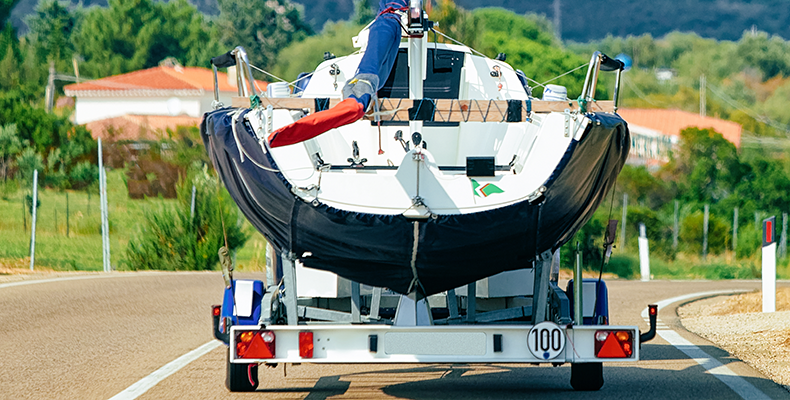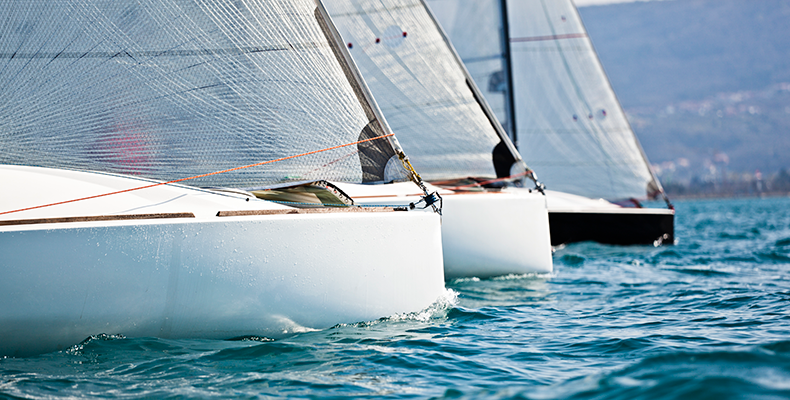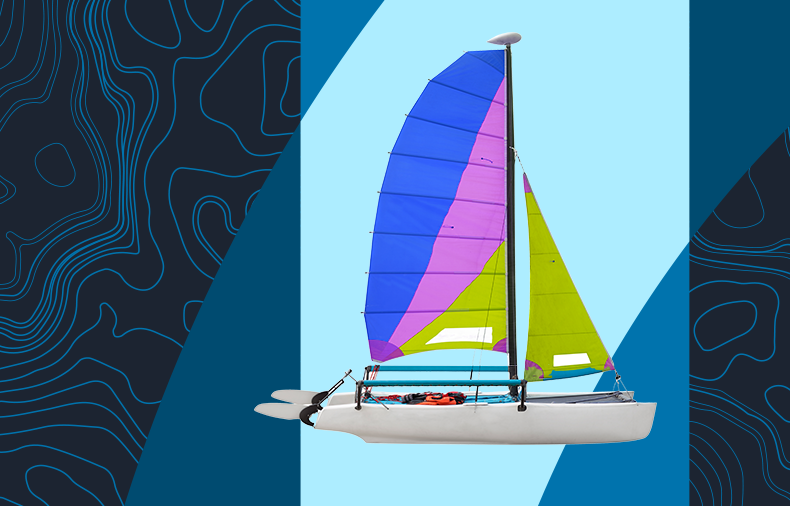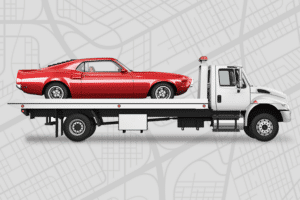The best sailboat transport options aren’t always evident. Transporting sailboats can be a complex process filled with risks. Choosing between open or enclosed transport methods involves weighing critical factors like cost, level of protection, and ease of loading. With many aspects to consider, sailboat owners must evaluate their options carefully.
This article provides an overview of the pros and cons of open and enclosed transportation for anyone seeking guidance on selecting the best method for their needs and budget. By outlining the unique advantages and challenges associated with each approach using insights from industry experts, we aim to assist readers in understanding these transport methods.
Ultimately, we aim to equip sailboat owners with the necessary information to minimize risks and costs when relocating their boats to new locations. Read on to learn all about the open vs. enclosed sailboat transportation decision and determine which option may suit your sailboat best.
Understanding Sailboat Transportation
Transporting a sailboat requires specialized handling and preparation due to its unique design characteristics and sailing apparatus. Before entrusting your boat to a transportation company, sailboat owners should understand the critical considerations.
Basics of Sailboat Transportation
The transportation process for sailboats differs from that of traditional motorboats. Key differences include:
- Weight Distribution: At least 50% of the weight should be balanced on the keel for stability when loading onto the transport trailer
- Securing Loose Items: Any removable deck gear like sails, booms, helm wheels, anchoring equipment, etc, should be taken down and stored securely to avoid height issues and potential damage
- Mast and Rigging Handling: Masts must be laid horizontally and secured tightly with halyards and shrink wrap to prevent dust buildup or vibration damage
Key Considerations Before Transport
Before fixing a transportation date, sailboat owners should:
- Conduct thorough inspections Of both the boat and transport vehicle/equipment to note vulnerabilities requiring extra protection and ensure proper working conditions to prevent mishaps.
- Discuss special measures: With the transporter, depending on factors like boat size, mast height, hull type, and weight-bearing capacity, determine standards and protocol.
- Confirm insurance policies: Verify appropriate coverage by all parties for the boat’s total value and transit risks for the entire shipping duration.
Open Transport for Sailboats

Open transport refers to transferring sailboats by road via trailers that do not contain covered enclosures. The boats are mounted openly on specialized trailers and racks fitted with stands, clamps, and protective padding to hold the hull and equipment during transport securely.
Open trailers offer several benefits for transporting sailboats:
- Cost Savings: Open transport is usually cheaper than enclosed options as it requires more spartan trailers without roofing and permits hauling multiple boats in one go. This significantly cuts costs, especially for owners who are relocating several ships.
- Flexibility: Most open trailers are designed to accommodate different hull types and sizes. This allows grouping varied boats on one trailer, ideal when moving a fleet, further optimizing costs. The open configuration also simplifies loading and unloading access.
- Visual Monitoring: With boats mounted openly, drivers and owners can quickly inspect conditions and hazardous shifts during transit, allowing timely interventions if required. Open access also permits routine checking at pit stops.
- Door to Shore: Open trailers can back boats up to launch docks. Owners can drive boats off directly into the water without using marina cranes, thus saving additional unloading and launching expenses.
Cons and Risks Associated with Open Transport
While cheaper and flexible, open transportation has some notable downsides:
- Exposure to Elements: Long drives through varying terrain while exposed heightens risks of road debris, bug accumulation, bird droppings, tree scratches, and weather; in other words, this method exposes your vehicle to weather elements.
- Overheight issues: Though safer structurally, mounting masts and booms horizontally with sails still poses overheight risks during bridges, utility lines, and tunnel routes, which need extensive pre-planning.
- Shifting Load Dangers: Open configuration provides fewer tie-down points and may increase the risk of boats coming loose through bumpy roads and harsh braking, threatening the loaded sailboat.
- Security Risks: Open access invites theft and vandalism, which could involve cutting tie-downs, stealing gear and equipment, or even towing away smaller boats. Constant vigilance is essential.
Enclosed Transport: A Comprehensive Overview
Enclosed transport refers to transferring sailboats via covered trailers that surround and protect the relocated vessels. Think of it as putting your boat in a truck. The enclosure is typically made of aluminum or fiberglass shell with insulation to control climate and prevent damage while in transit on highways.
Let’s take an example of a 40ft sailboat that needs to be moved from Florida to New York. The owner contracts a transport company with an enclosed trailer large enough to accommodate the boat. The vessel is carefully loaded onto the custom-built trailer using equipment like travel lifts. The trailer safely secures the ship within its weatherproof shell. Doors are closed and locked for transit. This provides 360-degree protection.
Why Choose Enclosed Transport for Your Sailboat?
Minimal Exposure: The sealed shell safeguards against road debris, insect accumulation, bird waste, and air pollution standards on open trailers during long-distance transport.
- Climate Control: Insulation maintains comfortable temperature and ventilation, minimizing cracks from weather fluctuations and moisture damage, especially with wooden hulls.
- Cushioned Ride: Hydraulic suspension within enclosures absorbs road shocks and harsh braking compared to open trailers, preventing gear failure and hull stress.
- Height Flexibility: Fully covered trailers quickly transparent bridges, overpasses, and tunnels, unlike dealing with horizontal masts and boom issues with open transport.
- Secure Protection: The durable, lockable, and fully-covered enclosure prevents theft, vandalism, or towing that open boats are vulnerable to during pit stops and overnight parking.
Limitations of Enclosed Transport
While enclosed transportation minimizes transit exposure and risks, the specialized equipment and exclusive transport make it more expensive than open options. Enclosed trailers also have fixed dimensions limiting boat size and numbers that can be transported together.
Additionally, the covered structure restricts easy inspection access during transit. Any shifting is only likely to be spotted during unloading. Unlike open trailers that can directly back the boats into launch ramps, the enclosure also necessitates specialized dock loading equipment to lower boats into the water.
When choosing between open or enclosed trailers to transport your sailboat, two key considerations take priority – cost and the safety/security of your valuable asset. This section weighs the pros and cons of each method across these aspects to help identify the best option based on your specific boat and budget.
Cost Comparison: Open Vs Enclosed

Several key factors come into play when estimating and comparing transportation costs between open and enclosed trailers. These elements largely dictate the pricing differentiation as they impact operating expenses for transport companies and the economies of scale possible with each trailer type. Analyzing aspects like customization needs, capacity limitations, and equipment overheads attached to each trailer model sets realistic cost expectations.
The following factors provide a glimpse into the underlying cost structure for open and enclosed transportation options based on the innate nature of these trailer varieties. Evaluating them side-by-side will demonstrate why enclosed trailers command premium pricing over their available counterparts for shipping similar boats.
What Factors Affect Open Transport Cost?
Open trailers provide cheaper transportation costs thanks to their simple design and ability to haul multiple boats per trip. Enclosed trailers are specialized vehicles with insulation, climate control, and protective covering, resulting in higher costs.
Minimal Customization Requirements
Open trailers only need a basic flatbed platform frame, wheels, and minimal gear like tie-downs, padding, and stands to secure the vessels, thus avoiding the high capital and operating costs of custom framework, outer covering, climate control systems, etc., that come with enclosed trailers. Their limited simple equipment also minimizes maintenance fees.
Greater Boat Capacity per Trip
Unlike enclosed options limited by fixed dimensions, open trailers can transport 4-5 boats per trip by carefully arranging mixed sizes and dividing total costs like fuel and driver charges across vessels. Their flexibility in fitting large and small ships also optimizes space, maximizing boat numbers to achieve economies of scale.
Increased Operational Efficiency
Combining different boat sizes allows for efficiently utilizing trailer bed real estate by slotting vessels tightly based on dimensions rather than dealing with uniform boat lengths end-to-end. More boats transported per trip enhance trip economics.
Lower Overhead Costs
With fewer specialized gear, customization, and minimal climate control machinery, open trailer maintenance overheads are inherently lower, contributing to cheaper overall operating costs.
Reduced Pricing
Both lower investments in essential customizable equipment and the potential to haul increased boat numbers enable open trailers to operate at a cheaper cost – savings that can ultimately be passed on through reduced customer pricing.
Factors That Impact Enclosed Trailers/Trucks Shipping Cost
Enclosed trailers provide premium, secure transportation utilizing customized protective shells and climate-controlled interiors to minimize transit exposure. However, at notably higher costs – read further below on critical factors that enable this elevated protection.
Specialized Design and Materials
Enclosed trailers are constructed using customized frameworks, materials like aluminum or reinforced fiberglass composites for outer shell construction, insulation to control climate, and hydraulic suspensions for cushioned movement. These specialized components increase manufacturing and maintenance charges.
Limited Capacity
Unlike open options, enclosed trailers come in fixed dimensions owing to their customized trailer bed sizes and integration of protective outer shells. This restricts capacity to 1-2 average-sized sailboats per trip, limiting economies of scale. The costs get concentrated on fewer boats.
Custom Interiors
Enclosed trailer interiors often incorporate specialized mounts, adjustable bracings, and custom padding to hold high-value boats in place securely without external tie-downs. Customization adds costs.
Complex Control Systems
Unlike basic open trailers, climate control machinery, electronic access, and surveillance systems integrated into enclosed trailers also push up equipment costs, maintenance charges, and the need for trained operators.
Higher Depreciation
The specialized materials and build process make enclosed trailer resale value hold up less over the years than essential open platforms. Faster depreciation requires a steeper recovery from operating revenue, adding overhead.
Safety and Security: Which is Superior?
When analyzing from a pure safety angle, while open trailers offer rerouting flexibility and enclosed models provide weather resilience, the core protection for any boat owner is preventing permanent structural damage that cannot be reversed.
Ensuring your sailboat reaches safely without cracks, fractures, or gear failure is central. From this lens, enclosed trailers provide unmatched shock-absorbing cushions through climate-controlled, insulated interiors that absorb road vibrations and impacts far more effectively. Avoiding structural degradation that can permanently destroy vessel integrity makes enclosed transporters the superior safety choice.
All other factors play secondary roles once material damage occurs. Prioritizing core boat structure preservation is thus crucial in the open vs. enclosed decision when sailor safety is your prime concern.
Making the Right Transportation Choice for Your Sailboat
When investing in a prized sailboat, choosing the correct transportation method is crucial to preserve your assets when relocating. Key deciding factors between open and enclosed trailers typically include cost, level of protection, and convenience. This blog shares insider tips that most first-time sailboat owners don’t consider but can hugely impact the transportation experience.
- Know the True Dimensions: Accounting just length or height alone when choosing trailer type often backfires. Hidden measurement slip-ups risk serious overhead snags or damage.
- Mind the Weight Distribution: How your sailboat’s heft sits on the trailer influences towing dynamics and tire or axle failures. Unlike motor yachts, sailboats need balanced positioning across keels, hulls, and limited stands. Get professional guidance on ideal weight distribution configurations.
- Inspect Access Route: Research origin, destination, and planned transit routes to tally low bridges, winding uphill climbs, or bumpy terrains. Detouring enclosed trailers gets complicated. If your path has multiple clearance or navigation challenges, go open.
- Assess True Cover Needs: Evaluate if your sailboat needs a fully enclosed container-like cover based on materials. Polyester boats can survive open-air transit, unlike fragile wood hulls. Barrier requirements depend on existing damage resilience.
- Confirm Security Preparedness: While enclosed trailers limit access, break-ins still happen. Carry out complete theft-proofing steps like locking compartments, ID etching gears, and installing hidden GPS trackers for both open and enclosed transfers.
- Inspect Equipment History: Examine carriages, hitches, and hydraulics for wear and tear if borrowing transporters. A snap decision to save rental cash by compromising equipment condition can come at a considerable safety cost later.
Takeaway
The ideal trailer for your sailboat depends tremendously on understanding nuances between transportation varieties and pairing with hauling requirements. Avoid general assumptions. Evaluate your trip specifics beyond dimensions and budget to make the smartest choice. Stay safe and sail happy!
People Also Ask
Transporting long distances or relocating permanently?
Enclosed trailers provide excellent protection for cross-country relocations, especially with custom boats involving high material and person hours. Multi-leg trips also risk exposure fatigue and vibration issues over time in an open configuration.
Transporting multiple boats or a fleet?
Open trailers work best for fleet transfers with the ability to mix varied boats on a single trailer, suiting most marina operators. Volume distribution helps mitigate costs escalating quickly, with enclosed trailers needing separate trips.
Dealing with height clearance issues?
Overheight sailboats requiring horizontal mast and boom mounting face risks of snagging bridges or electric lines on open trailers. Enclosed models quickly clear obstacles.
Operating under tight budget constraints?
If costs take priority, open trailers provide the most economical option. Just ensure to take additional security and hazard coverage precautions.
While enclosed transport is deemed the safest option, make cost-benefit assessments based on haul specifics. The wrong choice could leave you with delivery delays, damage expenses, or total loss from theft. Manage risks wisely.
Conclusion
Outline your priorities first – cost, safety, or convenience. If low budget, open trailers work if risks are mitigated through insurance, security preps, and gear protection.
For high-value boats or long distances, enclosed is best despite premium pricing. It guarantees superior safety over cumulative transit hazards. Look beyond cost alone when choosing. Evaluate route clearance, port infrastructure, and equipment accessibility as well. Choose a trailer variety that can handle your trip specifics.
Though enclosed offers ultimate safety, assess trade-offs if your sailboat can handle open transit through strategic padding without irreversible damage. Use insurance to offset repair costs and save up for your next adventure instead!
Pick a carrier with a proven history of hauling similar boat models. Compatibility between trailer type and impact outcomes. Entrusting your prized sailboat’s safety requires diligence at all junctures.
For personalized guidance on the best transportation solutions customized for your specific sailboat and route needs, consult uShip’s industry experts. uShip offers years of experience transporting thousands of sailboats. Get free quotes for our flexible open and enclosed transporter network that provides quality at competitive prices and insurance options to handle all your worries! Contact or request a quote today to move your vessel safely.



